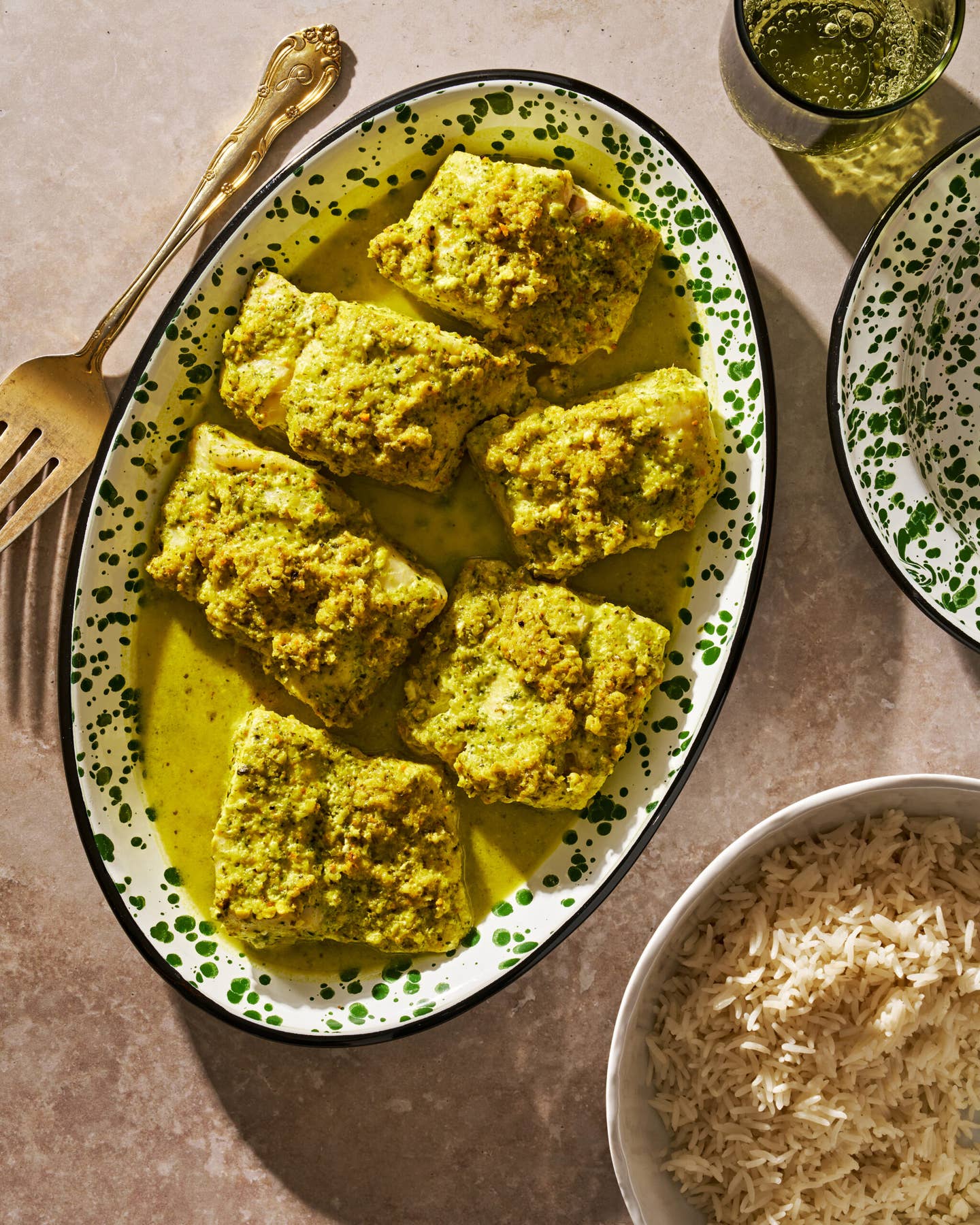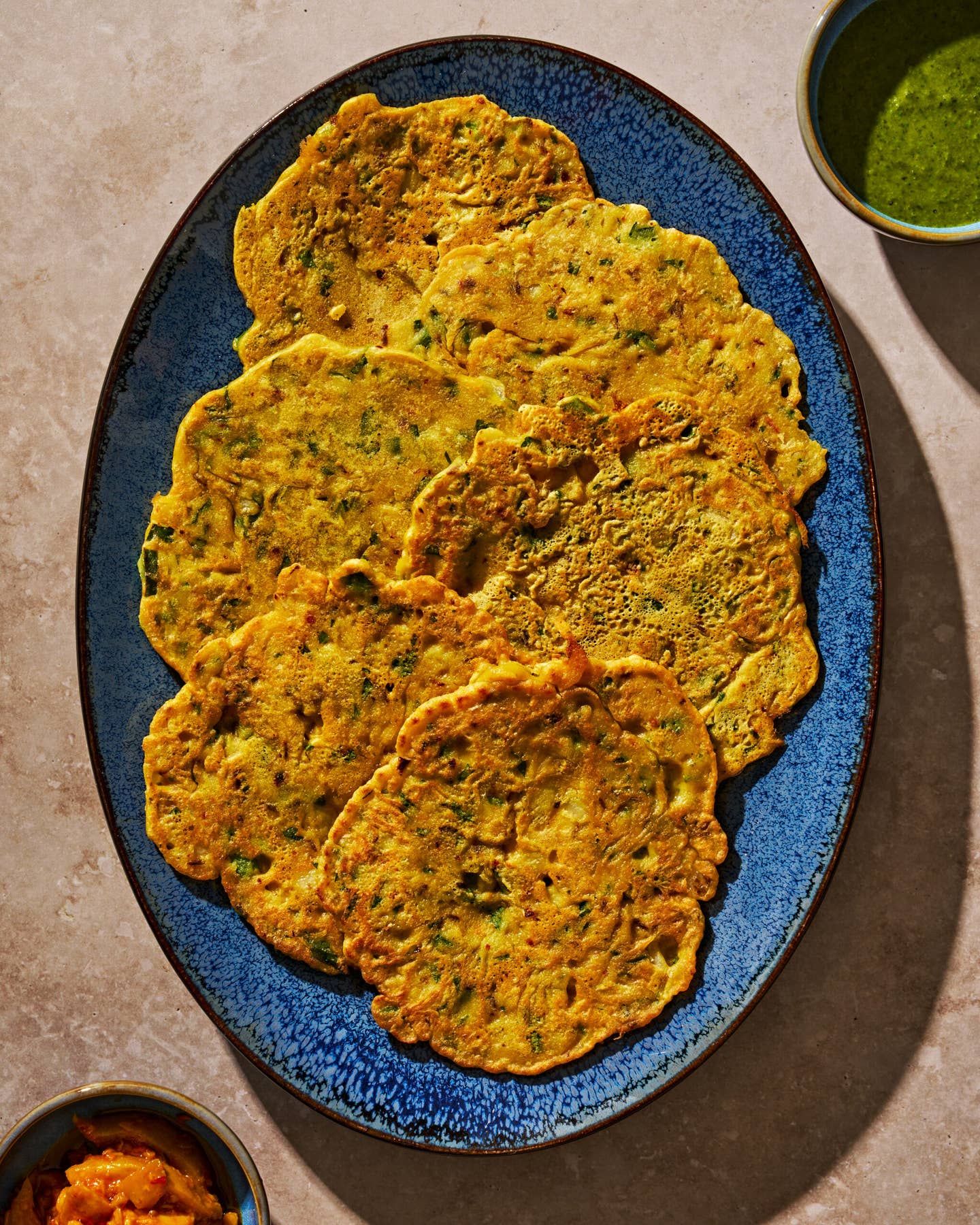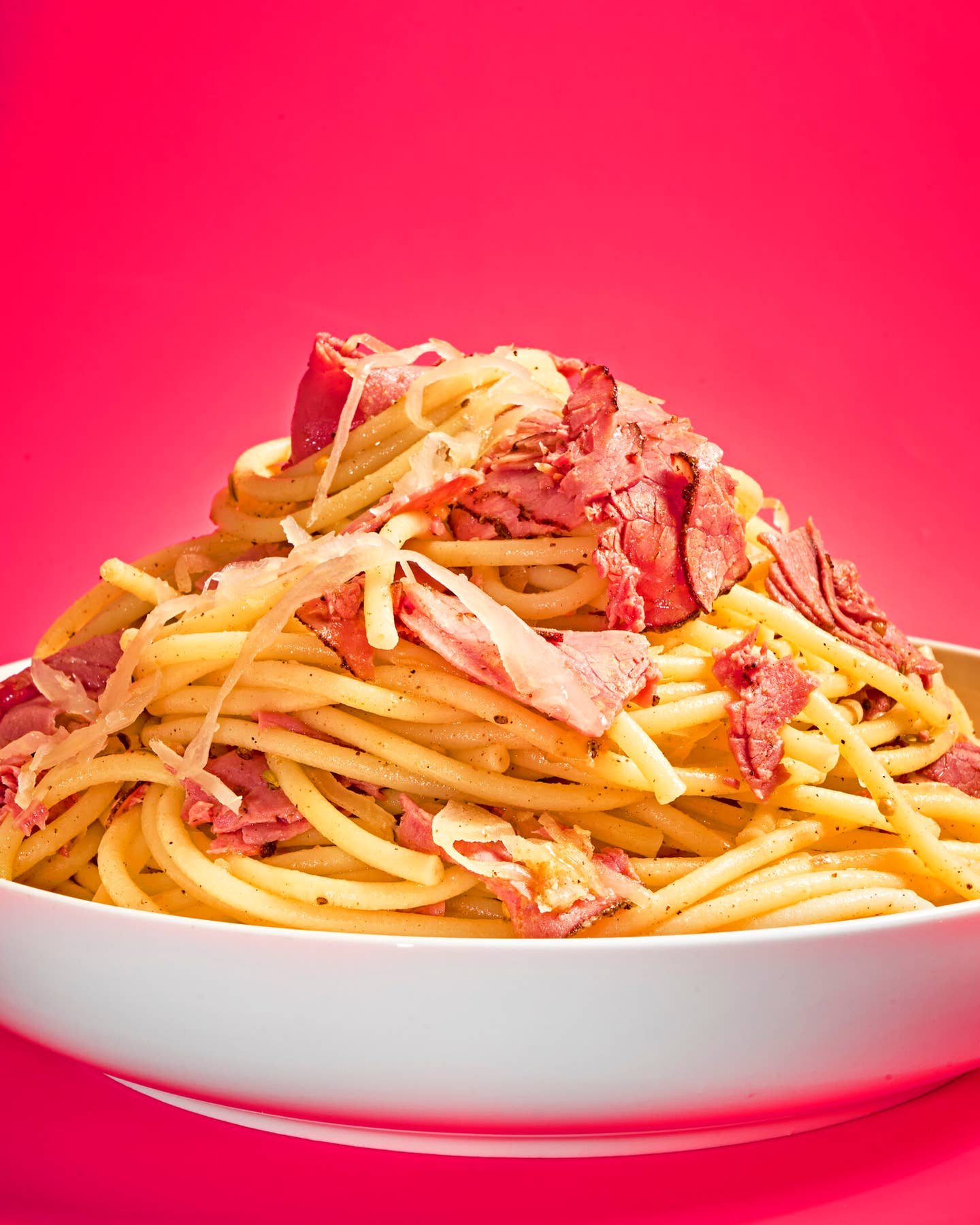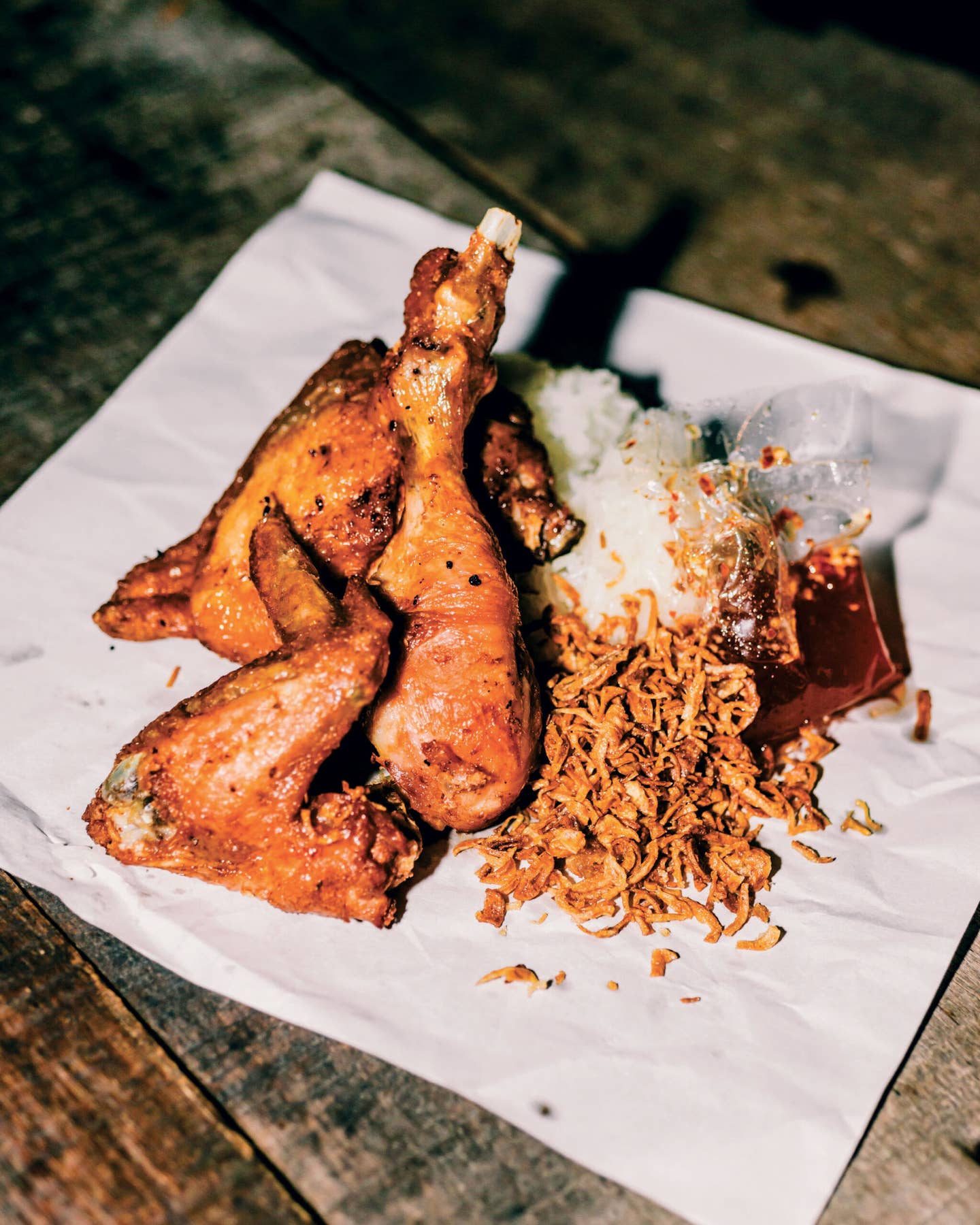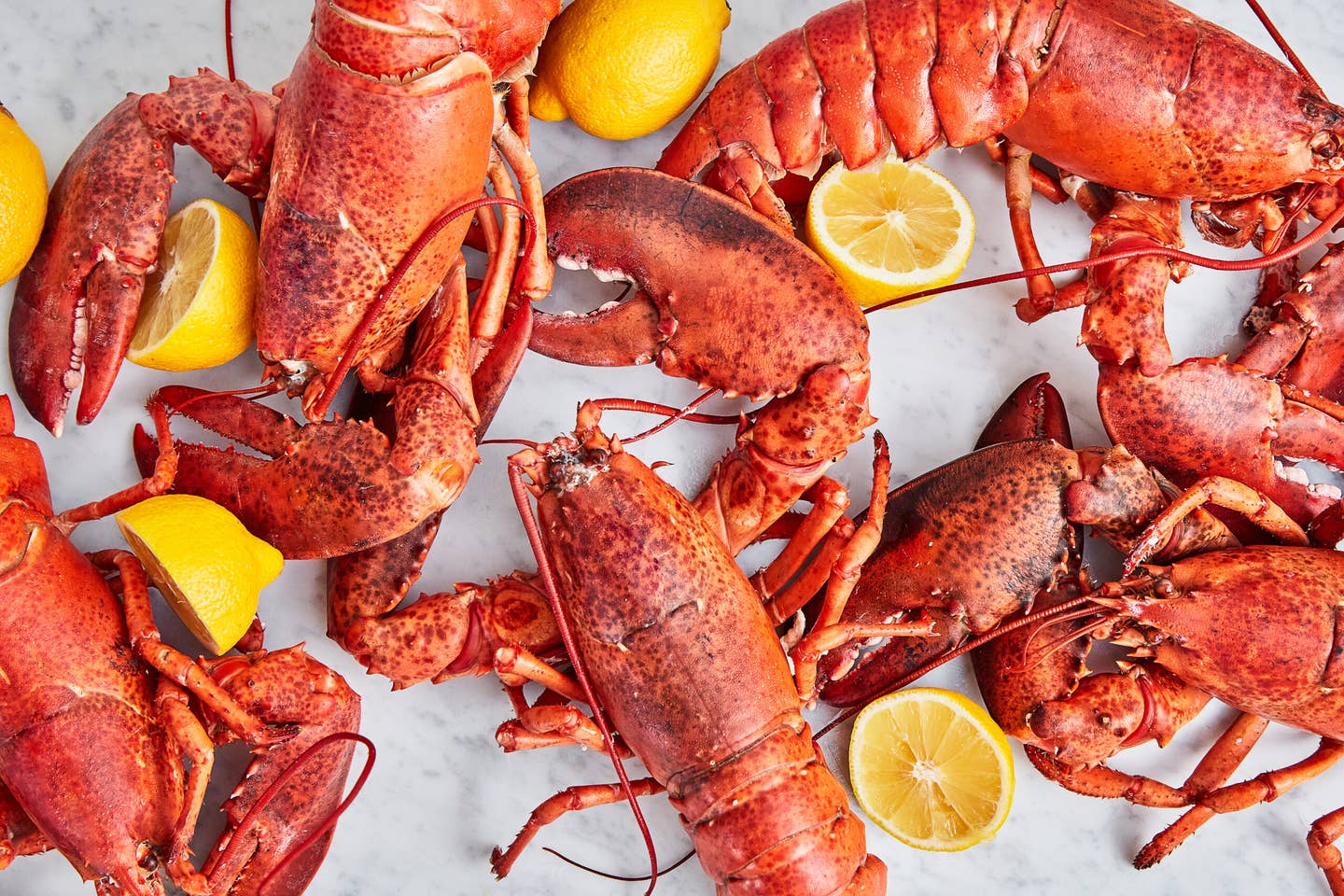
Cooking any seafood can be a daunting task. Without the proper know-how, it’s easy to go from perfectly done to overcooked in a matter of minutes. Lobsters are no exception, and the stress of cooking them is only magnified by their hefty price point and the fact that they’re so often reserved for special occasions—to say nothing of the fact that cooking one requires you to wrangle a live animal to get dinner on the table! I’ve prepared these creatures in restaurants using a variety of different methods over the years, but wanted to zero in on the very best way to do it, so I reached out to Curt Brown, a professional Maine lobsterman and marine biologist. “The beauty of lobster is that it is sustainable, delicious, and so simple to cook,” he reassured. “If you can boil water, you can cook a lobster.” Really all you’ll need is a tall pot, tongs, shears, and a cracker. Armed with Brown’s simple tips, even a beginner can learn how to cook a lobster—and extract all of its delectable meat—like a pro.
Step 1: Prepare your lobster.
Fill your tallest pot with an inch or two of water and add a couple of tablespoons of sea salt (or, if you’re cooking beachside, just use sea water). Cover with a lid and set the pot over high heat.
Once a crustacean dies, it begins decomposing rapidly, so for the best, safest results, you’re going to want to start with a live (and lively) lobster. Some folks just drop the creature directly into the pot, but a more humane approach is to first kill it immediately before cooking. To do this, place your lobster on a cutting board. Position the tip of a large chef's knife on top of the head of the lobster, perpendicular to the space right between its eyes, with the sharp edge pointing towards the tail. Using firm pressure, plunge the knife all the way through the head, and then angle your blade down 45 degrees. At this point, the lobster might still be twitching a bit, but is no longer alive.
Step 2: Skewer the tail.
If you want your finished lobster to lay flat, thread a long metal or bamboo skewer through the length of the tail, starting at the flippers and running all the way into the body. This step is optional, as there’s nothing really wrong with a curled tail, though skewering can also help to ensure even cooking.
Step 3: Drop the lobsters.
While most people boil their lobsters, Brown prefers to steam them. This method is safer and quicker—no waiting around for gallons of water to boil!—and results in sweeter and more flavorful results as you’re not cooking out all of the animal’s flavorful juices.
Once the water is boiling, remove the rubber bands from the lobster’s claws. Uncover the pot, and lower the lobsters into the water, tail first. Be sure not to add too many at once, two 1- to 1½-pound lobsters is about right for the average home stockpot. Replace the lid and cook until the lobster shells turn from blackish orange to bright red, about 12 minutes for soft-shell lobsters, or 14 minutes for hard-shell lobsters*. (If you’re unsure if the lobster is cooked, give one of its antennae a gentle tug; it should easily detatch when cooked).
Once cooked, use sturdy tongs to lift the lobster out of the pot, allowing any excess hot water to drip back in before transferring to a large rimmed baking sheet. Set aside to cool for a few minutes before handling.
*In Maine, hard-shell lobster season typically runs from November through June while soft-shell (also known as “new-shell lobster”) season runs from June through November.
Step 4: Seperate the tail.
To extract a lobster’s meat, first break it down into its anatomical parts. Once it is cool enough to handle, place one hand on the body behind the head, and the other on the tail; twist and pull the two pieces apart. Set the body aside; remove the skewer from the tail and discard.
Step 5: Break open the tail meat.
Holding the tail shell-side-down, with one hand at the fins, and the other hand at the second segment on the tail, apply gentle pressure to snap the fins away, revealing the tip of the tail meat. Using your thumbs, crack apart the remaining shell. (If the shell is too hard to break with your hands, you may also use strong kitchen shears to snip through the thin membrane on the underside of the tail to get at the meat.) Set aside the tail meat.
Then, go back to the little fins you removed earlier. Pull apart each individual flipper and give it a squeeze, revealing a thin nub of meat. :These are my favorite little morsels of lobster,” Brown tells me, and they are often overlooked by consumers.
Step 6: Pull the claw away.
Once the lobster tail has been cleaned, move on to the body and claws. Gripping one of the knuckles (basically the arms), twisting each claw gently to remove it from the body. Repeat with the second claw and set the body aside. Then, separate each knuckle from its claw.
Step 7: Crack the claws.
The claw is in two parts. Twist and remove the small, thumb-like bottom section gently to reveal the meat within. (If the meat breaks off with this piece, a toothpick or small fork may be used to pull it out.) Then use a lobster cracker to break through the larger top section of the claw, taking care not to mangle the meat—particularly if you’re planning to serve the claw meat whole in a recipe, like this fantastic linguine with lobster and chiles. Gently shimmy out the meat, and discard the shell. Repeat this process for the second claw.
Step 8: Crack those knuckles.
You’ll have two knuckles left. Using strong kitchen shears, snip down the length of the shells and pull out the meat.
Finally, Brown insists that we don’t forget about the thin strips of meat hiding in the lobster’s eight legs. (Maine Lobster processes around 2,000 pounds of leg meat per day, so I knew these pieces had to be worth the effort.) First, pull each leg away from the body. Some folks just chew on the legs to get at the meat, but if you want to add it to a dish, Brown suggests the following more sanitary method: Position a rolling pin or a bottle at the outer tip of the leg, then press and gently roll up towards the “shoulder,” squeezing the leg meat out as you go.
Brown does not like to get messy with the body of the lobster and you don’t have to either, but if you don’t mind getting your hands a little dirty, pull apart the shells and see what you find in there. Larger lobsters often have pockets of meat hiding in the body. Some people enjoy eating the green tomalley (the animal’s liver and pancreas), and female lobsters may also contain a bright red material which is the animal’s roe. All of this is edible and considered by many to be delicacies.
Like any new skill, practice makes perfect when it comes to cooking whole lobsters. Once you’ve steamed more than a couple of these tasty creatures, you’ll be a pro at getting each little morsel of meat out. Use this guide to familiarize yourself with the anatomy of the lobster, and to get comfortable with cooking them. Once you have all the succulent meat to celebrate your hard work with, Brown recommends enjoying it with garlic butter or honey butter—but he also can get behind a minimal approach: “I often just dunk my lobster in freshly squeezed lemon juice,” he says. “The citrus flavor goes so well with the sweet and tender meat.”
While steaming lobster is now my favorite way to cook lobster too, there are also many other ways to prepare them. Check out all of our favorite lobster recipes here!
Keep Reading
Continue to Next Story


